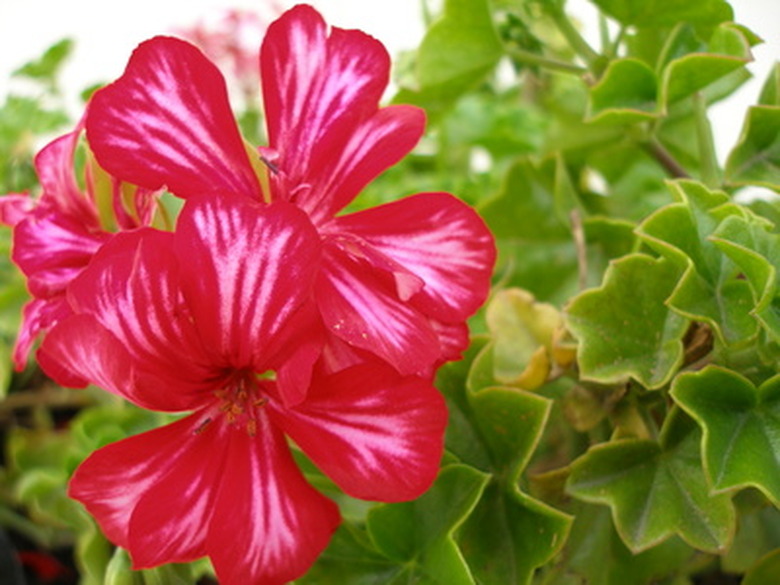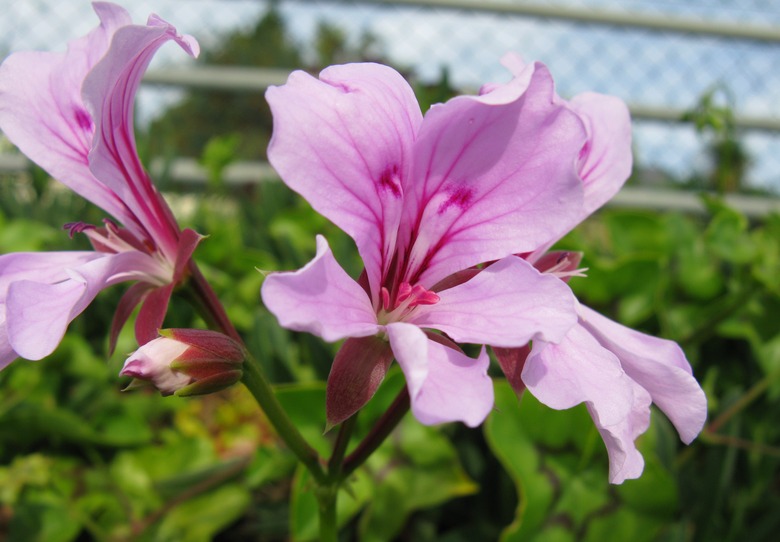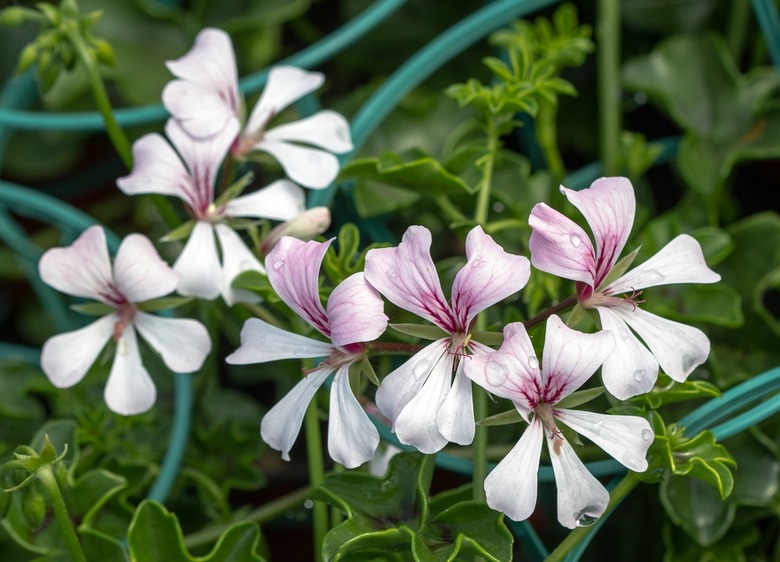How To Propagate Ivy Geraniums
Ivy geraniums earned their common name from their heart-shaped foliage, which gives the plant an appearance similar to English ivy plants (Hedera helix, zones 4 to 9). Sometimes called ivy-leafed geraniums, ivy geraniums (Pelargonium peltatum) are frost-sensitive perennials that grow best in frost-free climates within USDA hardiness zones 10 and 11, but they also grow well as indoor plants or houseplants in cooler climates.
Cuttings provide the best way of propagating ivy geraniums at home. The cuttings root quickly and will produce healthy new plants in just a few months, but they must be started under the right conditions to help ensure a good outcome.
Tip
Seed propagation is possible for some types of ivy geraniums, but cultivated varieties, or cultivars, will not reproduce true from seed, so cuttings are always your best option.
Gathering Ivy Geranium Cuttings
Starting cuttings at the right time of year makes a difference in how well they root. Ivy geraniums grow best from softwood stem cuttings taken in spring, but they will also root well from stem cuttings that are taken and potted up in autumn. Autumn cuttings are one way that gardeners overwinter these frost-sensitive plants in colder climates.
- The cuttings root best when taken from new growth. Avoid older stems and stems with buds or flowers because they may lack the energy needed to propagate. Always take cuttings from a healthy plant with no signs of disease.
- Take a 3- to 4-inch-long cutting from the tip of the stem. Make the cut just below a node, which is where the roots will form.
- Wrap the ivy geranium cuttings in a moist paper towel and keep them out of direct sunlight to keep them hydrated while you prepare a rooting pot.
- Prepare a pot for each cutting so that you won't have to tease apart the roots from multiple cuttings, when it comes time for repotting.
Tip
When gathering ivy geranium cuttings, use snips or shears that have been wiped down with disinfectant to kill off any bacteria.
Propagating Ivy Geranium Cuttings
The process of propagating ivy geranium cuttings is straightforward and does not require much labor or even much patience, because they root quickly with the proper care.
1. Use small plastic pots with drainage holes to propagate ivy geranium cuttings. Fill each pot with a moistened mix of half perlite or vermiculite and half potting soil or sphagnum. Firm the mix into the pot, then poke a hole in the center that is deep enough to hold the leafless part of the stem. 2. Strip off the leaves from the bottom half of each cutting to expose the nodes. Dust the leafless part of the stem and the cut end with rooting hormone, if desired. Rooting hormone is optional but helpful. 3. Stick the stem into the hole and hold it upright as you press the soil against the stem to ensure good contact. 4. Insert barbecue skewers into the soil on either side of the cutting. Cover the pot with a plastic bag so that the bag rests against the skewers and not the cutting. 5. Position the pot in indirect, bright light such as on a lightly shaded windowsill or outdoors on a sheltered porch.
Ivy geranium cuttings should root in four to six weeks, if the soil is kept barely moist and they have plenty of bright light.
Tip
Cold temperatures may slow rooting, so consider using a propagation mat, if it is chilly.
Growing Ivy Geranium Cuttings
Rooting is seldom obvious when starting cuttings. The best way to check for rooting is to gently tug the base of the cutting to feel if it is "stuck" to the soil by roots. Don't pull too hard because it could tear the newly formed roots. Remove the plastic bag from the pot after the ivy geranium cutting has rooted.
- Newly rooted ivy geranium cuttings need bright conditions out of direct sun while they grow and produce new leaves. Set the pots near an east- or west-facing window or near a south-facing window that has a sheer curtain over it.
- Root rot is always a risk when growing cuttings, so water only when the soil feels nearly dry just below the surface. Drizzle water around the base of the cutting when watering, rather than pouring water from overhead.
- Transplant the ivy geranium cuttings into permanent small pots filled with potting soil once they put on new leaves, which is a sign that they have developed a healthy root system.
Tip
Start feeding ivy geraniums the following spring using 1/2 teaspoon of fertilizer diluted in 1 gallon of water.
Ivy geranium cuttings grow best as potted plants in cooler areas, because they must be overwintered indoors. Although gardeners in frost-free areas can transplant these lush, lovely perennials into a sunny garden bed with fertile, fast-draining soil.


